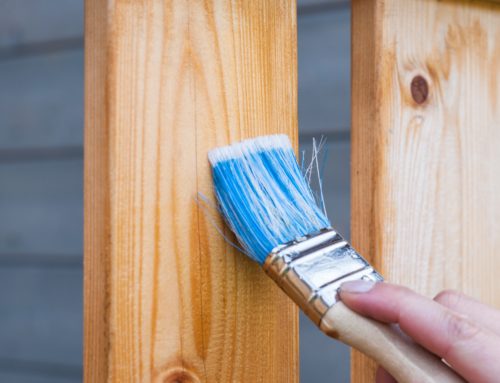By Laura Fisher Kaiser
Carefully plan and plot your garden to add value to your home and make the most of your time and money.
So don’t impulsively drive to your garden center. Walk your land, consult an almanac, test the soil, and make a budget. You’ll save your back, your budget, and your home’s curb appeal.
Tip #1: Get to know your land
Before shelling out money for new plants, consider what’s thrived and died in past gardens. Ask, “Is this plant doing its job? Adding beauty? Providing shade? Creating borders?” Give a pink slip to landscaping that’s not pulling its weight.If you’re a newcomer to gardening or to the area, scout the neighborhood to see which plants look happy and which wither on the vine.Keep in mind that even plants appropriate for your growing zone might not work in your personal patch. Your particular soil conditions, sunlight patterns, pest populations, and available water will determine what will grow. Your local cooperative extension service can analyze your soil and recommend amendments and suitable plantings.
Tip #2: Become sun savvy
Even experienced gardeners make mistakes. They plant shade-loving plants in full sun or sun-loving plants in partial shade. Before planting anything in your garden, compare the amount of sunlight your landscaping needs for the amount you have.Evaluating garden sunlight is tricky because daylight is a moving target: Seasons change and plants mature and cast different shadows.So before plotting plant beds and tree locations, study the movement of the sun throughout the day and, if you have time, throughout the year. Calculate how many hours of sun each garden section receives. Then check planting directions to make sure your greenery will get what it needs.
Tip #3: Become water wise
Over-watering plants can kill your landscaping and budget. To avoid death by water, know how much and when your greens need to drink: Sales tags should have watering directions. Drip hoses are thrifty ways to water plants, because the water goes directly to roots, drop by drop. Wind drip hoses around tree bases and bottoms of shrubs. Put hoses on automatic timers to avoid over-watering. If you have an in-ground sprinkler system, install an ET (evapotranspiraton) controller. These systems, which use real-time weather data sent by satellite to control when sprinklers turn on and off, can cut water use by as much as 30%. The controller costs between $300 and $400, depending on system size, but many municipal water agencies offer rebates, particularly in the arid Southwest.
Tip # 4: Mulch much
Spreading a few inches of mulch in landscaping beds protects your plants and shrubs from drying out, and makes beds look tidy and uniform. Mulch also keeps down weeds and moderates soil temperature.Organic mulches–grass clippings, wood chips, pine needles–eventually decompose and add vital nutrients to your soil and landscaping. Organics also encourage worm growth, nature’s own soil tillers and fertilizers. Shredded bark mulch from the garden center provides a rich look for your beds, adding curb appeal. It also prevents dirt from splashing on leaves.
Tip #5: Color your garden
Stick to a simple color scheme for flowers and blooming shrubs in your garden. Your landscaping will look more cohesive and professional.Massing plants of coordinated colors creates a sense of luxury and order. If you like pinks, add lavenders and blue-hued plants. If hot red is your color, mix with yellows and oranges. Keeping to a single color family in your garden also narrows your focus when roaming plant center aisles. If you are a gardening newbie and can’t tell a tea rose from a trumpet vine, ask the store’s plant expert for help. Most will be glad to exchange their knowledge for a sale. Also, gardening catalogs and websites often group complementary colors together. Some even provide a complete landscape plan, which you can faithfully recreate.
Tip #6: Avoid invaders
Ivies, grasses, and vines will fill in your garden quickly, and just as quickly take over your landscaping. Once these “invasives” take root, unearthing them is difficult, and in some cases, impossible.
Your garden center doesn’t call these spreaders “invasives.” They are billed as “fast growers” or “aggressives,” but often that’s code for non-native plants that take over the landscape and crowd out locals by stealing nutrients, light, and water. The U.S. Department of Agriculture maintains a list of invasives that includes various ivies, grasses, weeds, vines, self-seeding varieties of bushes and shrubs, and even seemingly innocuous herbs, like mint. Your county extension service can steer you toward the species best suited to your garden. Warning: If you love growing mint, grow it in a pot on your deck or patio.
Tip #7: Beware of neighbors bearing green gifts
You should love thy neighbor, but don’t ever take cuttings from their gardens unless you know exactly what they are and how they grow. Self-seeding perennials, such as Black-Eyed Susans and coneflowers, will quickly fill bare spots with splashes of color. If you tire of them, just grab a spade and dig them out.But if a neighbor extends a slender stalk of Rose of Sharon, or other invasive tree species, run away screaming. These trees will spread throughout your yard and grow roots so deep that only a professional–or the better part of your weekend–can dig and pull them out.
Tip #8: Plant shade trees for natural A/C
Shade trees planted on the south and west sides of a house reduce cooling bills — up to 25% — and lower net carbon emissions. So include shade trees in your landscaping plan.Choose shade trees according to their size at maturity, which could be 20 years away. Dense deciduous trees — maples, poplars, cottonwoods–are good selections because their leaves cool your house in summer, and their bare branches let light in during winter. Plant them close enough to shade your house, but not so close that they will overwhelm the space. If you want a faster growing shade tree, about 2 feet per year, select a northern red oak, Freeman maple, or tulip tree.
Tip #9: Power down your lawn mower
The Environmental Protection Agency says gas-powered lawn mowers contribute as much as 5% of the nation’s air pollution. Switching to new generation electric and push-reel mowers—which are lighter, quieter, and kinder to your lawn than power mowers—reduces emissions and cuts fuel consumption.To mow three-quarters of an acre of grass with a power mower requires 1 gallon of gas. As gas prices head to $4 per gallon, you could save $100 a year by switching to a muscle-powered or electric machine. An electric or good push-reel mower costs $150 to $250, so it will quickly pay for itself.
Tip #10: Grade your landscaping
Once a year, walk your property, cast a hard eye on your garden beds and ask, “Is that plant doing its job? Is it growing into its space, or wandering wherever it likes? Are leaves healthy or spotted with mold and pests? Are these greens improving curb appeal or just making my house look overrun?”If a plant or shrub isn’t working out, it’s compost. If shrubs are growing too close to your foundation–1 foot away is good–transplant or prune them. Make sure trees are growing no closer to your house than the width of their mature canopies. Otherwise roots can burrow into foundations, and overhanging branches can trap moisture against the roof or siding, leading to rot and insect damage.Check your flowering plants and shrubs to see if they are indeed flowering. Too few or dull blossoms should rally after a dose of fertilizer or layer of compost. An inexpensive alterative to commercial fertilizers is manure tea. Fill the foot of old pantyhose with a clump of cow or horse dung, tie the hose to the watering can handle, and let the manure steep in water. You can get weeks of nutrition from a little bit of dung.
Please feel free to share some of your own gardening tips in the comments below.
Laura Fisher Kaiser is a contributing editor to Interior Design magazine, a former editor at This Old House Magazine, and co-author of The Official eBay Guide. She cut her water bill in half by replacing all her water-guzzling toilets with HETs.











